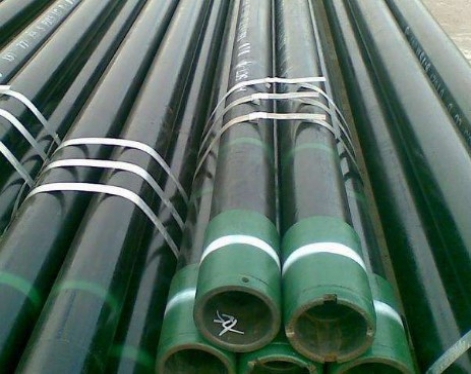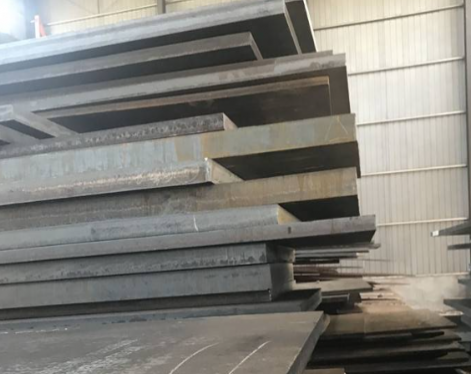Steel casing pipe weight calculation, why is it important?
As a key building material, steel casing pipe is widely used in various engineering fields. For example, in building water supply and drainage systems, it can protect pipes from erosion by the external environment and ensure smooth water flow. In energy fields such as oil and natural gas transportation, steel casing pipe is an important protective facility to ensure the safe operation of pipelines and prevent medium leakage.
Accurately calculating the weight of steel casing pipe is of great significance in practical applications. From the perspective of cost control, accurate weight calculation can help companies rationally plan procurement volumes and avoid material waste and backlogs. In terms of construction safety, knowing the exact weight of the steel casing pipe allows the construction team to choose appropriate lifting equipment and installation technology to prevent safety accidents caused by overweight or improper construction methods. Therefore, mastering the calculation method of steel casing pipe weight plays an indispensable role in ensuring the smooth progress of the project, controlling costs and ensuring construction safety.
What are the factors that affect the weight of steel casing pipe ?
The weight of steel casing pipe is not fixed, but is affected by several key factors:
Pipe diameter: Pipe diameter refers to the inner and outer diameters of the steel casing pipe and is one of the key factors affecting weight. All other things being equal, a larger pipe diameter means a larger cross-sectional area of the steel casing pipe, which in turn requires more steel and naturally results in a heavier weight.
Wall thickness: Wall thickness refers to the thickness of the steel casing pipe. As wall thickness increases, the amount of steel used per unit length increases, and the weight of the steel casing pipe also increases. Special environments such as high pressure and high corrosion require thicker steel casing pipe to ensure safety and durability. Such thicker steel casing pipe can be significantly heavier than conventionally thickened products.
Length: The length of the steel casing pipe is directly proportional to its weight. The longer the length, the more steel is consumed and the heavier the weight.
Material: Different steel materials have different densities, which directly contributes to variations in the weight of steel casing pipe. Common steels include carbon steel, stainless steel, and alloy steel. Carbon steel has a relatively constant density of approximately 7.85g/cm³. Stainless steel, depending on its alloy composition, generally has a density between 7.93 and 8.0g/cm³. Alloy steels have a wide range of densities depending on the type and content of alloying elements. For steels of the same size, the higher the material density, the heavier the steel casing pipe.

Steel casing pipe weight calculation method
The calculation formula for the weight of the steel casing is: W = 0.02466 × (D − t) × t × L. Where “W” represents the weight of the steel casing pipe, “D” is the outer diameter of the steel casing pipe (unit: mm); “t ”is the wall thickness of the steel casing pipe (unit: mm); “L” represents the length of the steel casing pipe (unit: m); The density coefficient for carbon steel is 0.02466, based on the density of carbon steel being approximately 7.85g/cm³. The density coefficient of steel casing pipe made of different materials will vary. For example, the coefficient of stainless steel casing pipe may need to be adjusted according to the density corresponding to its specific alloy composition.
What should you pay attention to when calculating?
1. Data measurement accuracy
Before calculating the weight of the steel casing pipe , be sure to ensure the accuracy of the measurement of various data of the steel casing pipe. Small errors in data such as outer diameter, wall thickness, and length will be magnified during the calculation process, resulting in large deviations in the weight calculation results. Choose measuring tools with appropriate accuracy, such as vernier calipers, micrometers, etc., and strictly follow the measurement specifications. Take the average value of multiple measurements to reduce errors.
2. Determination of material density
The density of steel casing pipe varies depending on the material, making it crucial to consider when calculating weight. Common carbon steel casing pipe has a density of approximately 7.85g/cm³. However, stainless steel, depending on alloy composition, has a density of 7.93g/cm³ for 1Cr18Ni9 and 7.75g/cm³ for 1Cr13. The density of alloy steel casing pipe can vary significantly depending on the type and content of alloying elements. Before calculating weight, it's crucial to accurately determine the density based on the specific material of the steel casing pipe, by consulting the relevant material manual or the supplier. Failure to do so will result in an inaccurate weight.
3. Consider loss
In actual engineering, material loss must be properly considered when calculating the weight of steel casing pipe. During the cutting and processing of steel casing pipe, some scraps will inevitably be produced; during transportation and installation, certain material losses may also be caused due to collisions, damage, etc. Generally speaking, the loss rate of steel casing pipe in projects is around 3% - 8%. The specific value should be determined based on factors such as the complexity of the project, construction technology, and management level.
Read more: Advantages and Disadvantages of Steel Casing Pipes
As a key building material, steel casing pipe is widely used in various engineering fields. For example, in building water supply and drainage systems, it can protect pipes from erosion by the external environment and ensure smooth water flow. In energy fields such as oil and natural gas transportation, steel casing pipe is an important protective facility to ensure the safe operation of pipelines and prevent medium leakage.
Accurately calculating the weight of steel casing pipe is of great significance in practical applications. From the perspective of cost control, accurate weight calculation can help companies rationally plan procurement volumes and avoid material waste and backlogs. In terms of construction safety, knowing the exact weight of the steel casing pipe allows the construction team to choose appropriate lifting equipment and installation technology to prevent safety accidents caused by overweight or improper construction methods. Therefore, mastering the calculation method of steel casing pipe weight plays an indispensable role in ensuring the smooth progress of the project, controlling costs and ensuring construction safety.
What are the factors that affect the weight of steel casing pipe ?
The weight of steel casing pipe is not fixed, but is affected by several key factors:
Pipe diameter: Pipe diameter refers to the inner and outer diameters of the steel casing pipe and is one of the key factors affecting weight. All other things being equal, a larger pipe diameter means a larger cross-sectional area of the steel casing pipe, which in turn requires more steel and naturally results in a heavier weight.
Wall thickness: Wall thickness refers to the thickness of the steel casing pipe. As wall thickness increases, the amount of steel used per unit length increases, and the weight of the steel casing pipe also increases. Special environments such as high pressure and high corrosion require thicker steel casing pipe to ensure safety and durability. Such thicker steel casing pipe can be significantly heavier than conventionally thickened products.
Length: The length of the steel casing pipe is directly proportional to its weight. The longer the length, the more steel is consumed and the heavier the weight.
Material: Different steel materials have different densities, which directly contributes to variations in the weight of steel casing pipe. Common steels include carbon steel, stainless steel, and alloy steel. Carbon steel has a relatively constant density of approximately 7.85g/cm³. Stainless steel, depending on its alloy composition, generally has a density between 7.93 and 8.0g/cm³. Alloy steels have a wide range of densities depending on the type and content of alloying elements. For steels of the same size, the higher the material density, the heavier the steel casing pipe.

Steel casing pipe weight calculation method
The calculation formula for the weight of the steel casing is: W = 0.02466 × (D − t) × t × L. Where “W” represents the weight of the steel casing pipe, “D” is the outer diameter of the steel casing pipe (unit: mm); “t ”is the wall thickness of the steel casing pipe (unit: mm); “L” represents the length of the steel casing pipe (unit: m); The density coefficient for carbon steel is 0.02466, based on the density of carbon steel being approximately 7.85g/cm³. The density coefficient of steel casing pipe made of different materials will vary. For example, the coefficient of stainless steel casing pipe may need to be adjusted according to the density corresponding to its specific alloy composition.
What should you pay attention to when calculating?
1. Data measurement accuracy
Before calculating the weight of the steel casing pipe , be sure to ensure the accuracy of the measurement of various data of the steel casing pipe. Small errors in data such as outer diameter, wall thickness, and length will be magnified during the calculation process, resulting in large deviations in the weight calculation results. Choose measuring tools with appropriate accuracy, such as vernier calipers, micrometers, etc., and strictly follow the measurement specifications. Take the average value of multiple measurements to reduce errors.
2. Determination of material density
The density of steel casing pipe varies depending on the material, making it crucial to consider when calculating weight. Common carbon steel casing pipe has a density of approximately 7.85g/cm³. However, stainless steel, depending on alloy composition, has a density of 7.93g/cm³ for 1Cr18Ni9 and 7.75g/cm³ for 1Cr13. The density of alloy steel casing pipe can vary significantly depending on the type and content of alloying elements. Before calculating weight, it's crucial to accurately determine the density based on the specific material of the steel casing pipe, by consulting the relevant material manual or the supplier. Failure to do so will result in an inaccurate weight.
3. Consider loss
In actual engineering, material loss must be properly considered when calculating the weight of steel casing pipe. During the cutting and processing of steel casing pipe, some scraps will inevitably be produced; during transportation and installation, certain material losses may also be caused due to collisions, damage, etc. Generally speaking, the loss rate of steel casing pipe in projects is around 3% - 8%. The specific value should be determined based on factors such as the complexity of the project, construction technology, and management level.
Read more: Advantages and Disadvantages of Steel Casing Pipes









